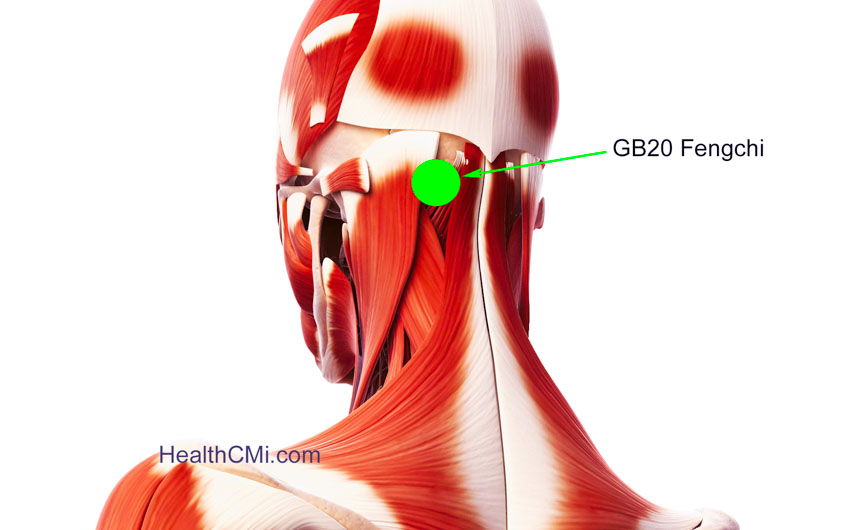
Acupuncture is effective for the treatment of vestibular migraines. Affiliated Hospital of Shanxi University of Traditional Chinese Medicine researchers conducted a clinical trial and determined that acupuncture with moxibustion is more effective than flunarizine for the alleviation or elimination of dizziness and cephalalgia due to vestibular migraines. Warm needle acupuncture produced significantly greater clinical improvements and produced a lower relapse rate than flunarizine. [1] The following measurement parameters were recorded and evaluated: Dizziness Handicap Inventory (DHI), Visual Analog Scale (VAS), and dizziness duration.
The researchers note that jing-luo principles apply to their treatment protocols. The approach to patient care was based on the treatment principle of enhancing qi and blood circulation to the brain and head using warm needle acupuncture. The patient sample size consisted of 68 patients that were admitted into the hospital. The 68 patients were randomly divided into a drug monotherapy observation group and a warm needle acupuncture group, with 34 patients in each group. Participants in the trial had no significant differences in terms of course of disease or mean age when initially admitted. For inclusion criteria, the sample met the International Classification of Headache Disorders (ICHD-3).
The drug observation group received regular doses of flunarizine (5 mg) for a period of two weeks but did not receive any acupuncture. Flunarizine is a vasodilator, an antivertigo agent, a histamine receptor antagonist (antihistamine), and a calcium channel blocker. The acupuncture group received acupuncture treatments in a supine position; however, they did not receive any medications. The following acupoints were utilized with 0.35 mm filiform needles (Hwato/Huatuo brand):
- GV20 (Baihui)
- KD3 (Taixi)
- GB20 (Fengchi)
- MHN9 (Taiyang)
- GB8 (Shuaigu)
- ST36 (Zusanli)
- SP6 (Sanyinjiao)
- LV3 (Taichong)
For the first two points, a tonifying method (Bu Fa) was employed and a mild reinforcing-attenuating (Ping Bu Ping Xie Fa) method was used for the rest of the points. Depth and angle of needles varied based on the acupoints used. For bilateral Fengchi, needles were obliquely inserted toward the nasal tip. For Baihui and Shuaigu, needles were inserted obliquely-transversely, reaching a 0.8 cun depth. For Taiyang and Taichong, needles were inserted perpendicularly to 0.8 cun. For Zusanli and Sanyinjiao, needles were inserted perpendicularly to 1 cun. Needles were retained for 30 minutes before removal.
Moxibustion pieces of two centimeters in length were connected to Baihui, Taiyang, Shuaigu, Zusanli, and Sanyinjiao. Two moxibustion pieces were burned on each needle handle during treatment. Daily acupuncture treatments were applied for a period of two weeks. Follow-up evaluations were performed 8 weeks after completion of treatment.
The researchers note that a previous study compared the efficacy of warm needle acupuncture plus herbs with patients receiving both ibuprofen and flunarizine hydrochloride. That study showed similar results. [2] The study focused on migraines without aura due to cold-type blood stasis and included both acupuncture and herbal medicine. The herbal formula for all patients was Xue Fu Zhu Yu Tang. A total of 84 patients were included in the research, with 42 cases in the observation and warm needle acupuncture groups respectively. A twisting and reducing method was applied to the following acupuncture points:
- GB20 (Fengchi)
- GB40 (Qiuxu)
- SP6 (Sanyinjiao)
- CV4 (Guanyuan)
After a deqi sensation was achieved, needles were retained for 30 minutes. Moxa was attached to the end of the needles and treatment was administered daily for 4 weeks. Upon completion of the treatment, the warm needle acupuncture group presented greater improvements in all measurement parameters. Patients’ VAS scores dropped from 15.27 ±2.43 to 8.03 ±1.14, which greater than the change showed in the drug group. Based on the MOS item short-form health survey (SF-36), the patients’ general physical condition and mental health conditions also changed more significantly in the warm needle acupuncture group. The aforementioned clinical trials indicate that warm needle acupuncture is an effective treatment for migraines.
References:
[1] Zhao Ziye, Wang Piming, Clinical Observation on 34 Cases of Vestibular Migraine with Deficiency of Qi and Blood Treated by Warming Acupuncture, Chinese Journal of Ethnomedicine and Ethnopharmacy,2021,Vol. 30,No. 4.
[2] Xuefu Zhuyu Decoction Combined with Warm Needle Moxibustion for the Treatment of 42 Cases of Migraine without Aura of Cold Blood Stasis Type. Wu Can, Deng Xingxing, (Qionghai City Hospital of Traditional Chinese Medicine, Qionghai, Hainan, 571400), Forum on Traditional Chinese Medicine, Nov. 2020, v. 35, no. 6.


